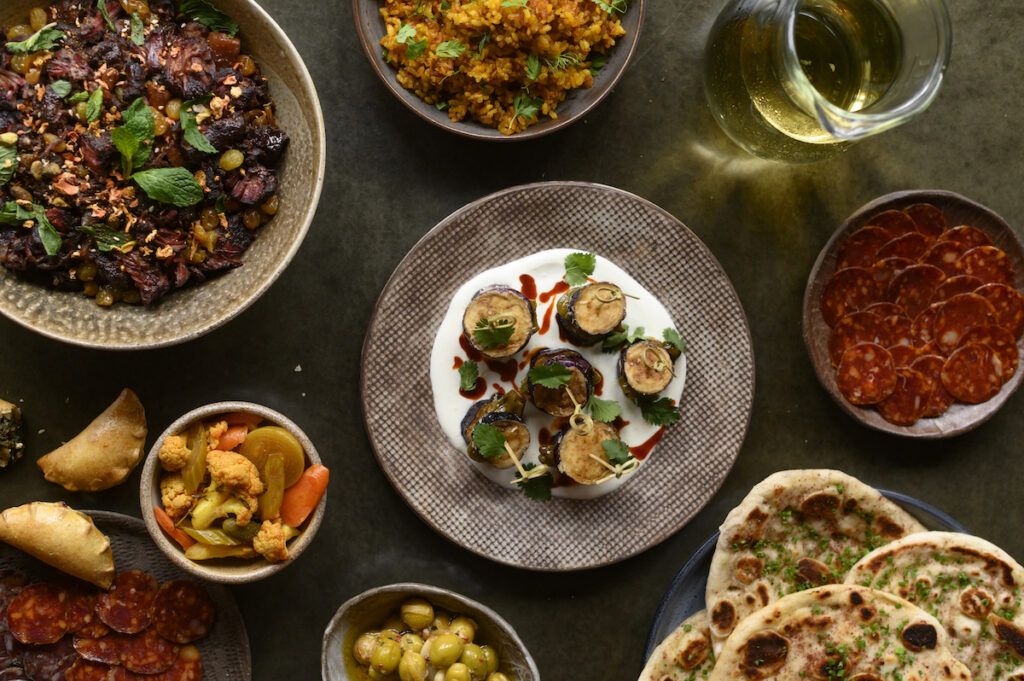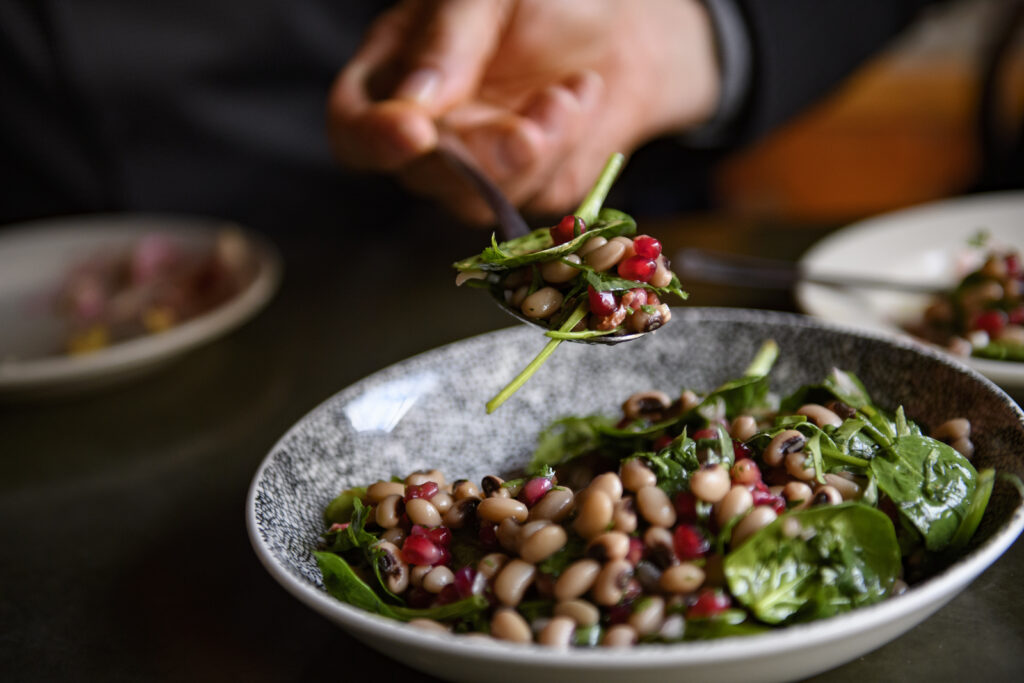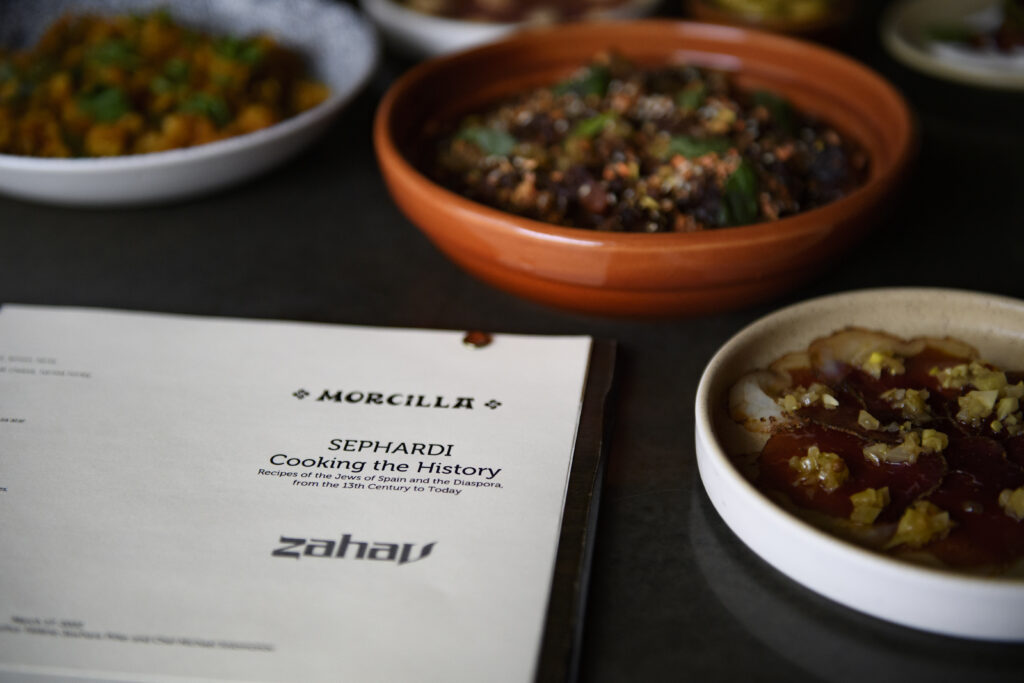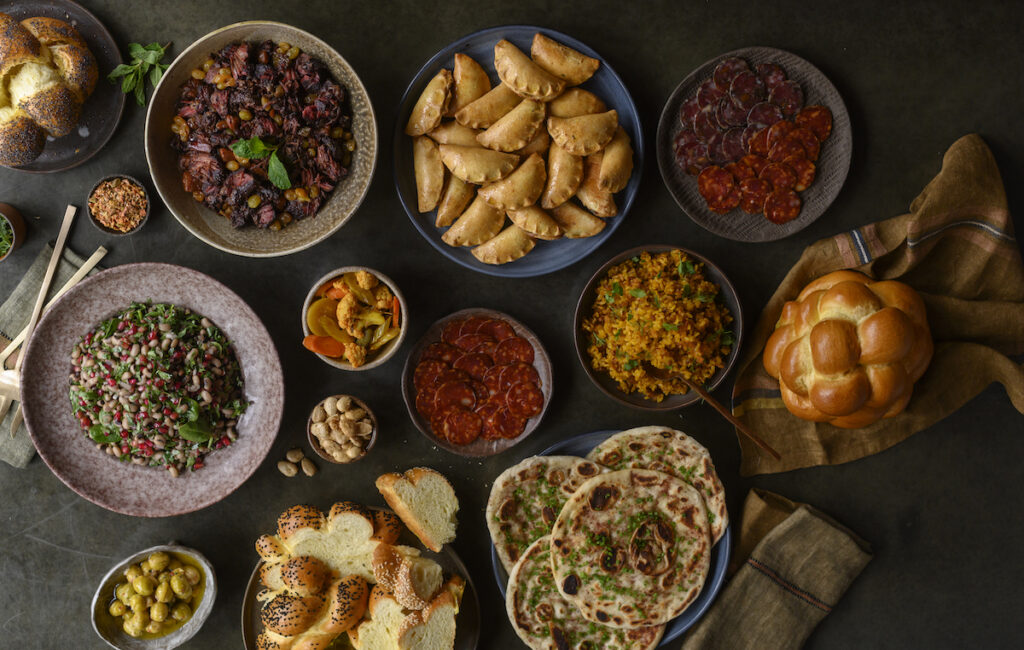French Medieval Historian Hélène Jawhara Piñer invited Pittsburgh’s Chef Justin Severino and Philadelphia’s Chef Mike Solomonov to join her in creating a magnificent Rosh Hashanah meal, starting with the centuries-old recipes of her carefully researched cookbook, Sephardi: Cooking the History.
At first taste, Hélène Jawhara Piñer’s Sephardic cooking will make you close your eyes. Tender lamb, sweet golden raisins, a fresh kick of mint, and a burst of pomegranate will invite you to savor each layered bite without interruption.
Then, Hélène will invite you to open your eyes more fully. You come to see how each forkful has centuries of significance behind it. You learn to see how her ancestors preserved their history and religion through ingredients and techniques.

History is Hélène’s secret ingredient. She says, “For me, a dish tastes differently when you know where it comes from. Its history makes each bite more intense, more delicious.”
As both a chef and a world-renowned medieval historian, Hélène is uniquely positioned to tell the story of the Sephardim. The name refers to the Jews of the Iberian diaspora.
For those of you far removed from AP European History class, here’s a refresher for context: In 1492, the Catholic monarchs issued the Alhambra Decree, ordering the Jews to convert, accept expulsion, or face persecution. Each choice had major repercussions, which Hélène explores through the lens of food. This research culminated in her cookbook, Sephardi: Cooking The History. Recipes of the Jews of Spain and the Diaspora, from the 13th Century to Today.

Sephardic Cooking and its Unique History
Her research is rife with double-edged swords. The prejudice that tasked the Spanish courts to closely monitor those who practiced Judaism in secret, also provides a rich historical resource about their customs. Hélène wrote, “Food and Jewish holidays are interwoven. In Jewish culture, talking about food means talking about licit and illicit foods.” Hélène compared the Inquisition documents with research on agricultural and medicinal practices to piece together a Sephardi story. Through her recipes, the stories and the lessons continue.
In the spirit of the adaptation, evolution, and transmission of Jewish cuisine, she also added her own mark on the book, pulling inspiration from the many bakers on her mother’s side, the simplicity of her paternal grandmother’s cooking, and the wide array of tips culled from traveling to the far reaches of the diaspora for her research: São Paulo, Casablanca, and Tel Aviv to name a few.

Pittsburgh’s Chef Justin Severino and Philadelphia’s Chef Mike Solomonov joined Hélène Jawhara Piñer to create a magnificent Rosh Hashanah meal utilizing recipes from her cookbook.
Around the World with Sephardic Recipes
Hélène’s travels also brought her to Pittsburgh, where she invited chefs Justin Severino and Mike Solomonov to collaborate, to interpret her recipes, and to add their own touches: Morcilla’s penchant for cured meats, a chef’s idea to pair the sweetness of carrot juice and a dehydrated carrot-pulp dukkah with the traditional saffron rice, a slice or two of perfectly golden, round challah from Zahav. The result was a celebration of history, collaboration, and adaptation.
As Rosh Hashanah draws near, many will gather for their own celebratory meals in honor of the Jewish New Year. There will be religious services, introspection, and festive meals steeped in rituals and tradition. Whether you add these recipes to your religious gatherings or use them as a way to better understand a culture beyond your own, I urge you to make Sephardi Cooking a part of this holiday season. Helene’s body of work is an invitation for reverence and creativity. It is an invitation to close your eyes and savor something delicious and open your eyes to the lessons of history and the resilience of a people. Both invitations are quite beautiful.

A Sephardic Rosh Hashanah Menu
Recipes Pictured Above by Hélène Jawhara Piñer with Chef Justin Severino and Chef Mike Solomonov
First course
Sujuk
Marcona almonds
Basturma
Spicy fennel relish
Manzanilla Olives
Roasted garlic, lemon, herbs
Cordovan Fried Eggplant
Padron pepper conserva, whipped goat cheese, harissa honey
Second Course
Black-Eyed Pea Salad
Pomegranate, cilantro, spinach, lemon
Andalusian Eggplant Croquettes
Roasted eggplant, Idiazabal cheese, black olive labneh, za’atar
Beet Conserva
Smoked goat cheese tahini, saffron maple
Vadouvan Matza
Third course
Andalusian Lamb Stew
Braised Elysian Fields lamb shoulder, pomegranate molasses, golden raisins, pistachio and carrot dukkah, mint
Crispy Carrot & Saffron Rice
Garlic & Sumac Naan Cooked a la Plancha
Fourth Course
Pomegranate Rose & Blood Orange Sorbet Halva
Warm Mint Tea
Meyer lemon, lemongrass
Story and Styling by Quelcy T. Kogel / Photography by Jeff Swensen / Recipes by Hélène Jawhara Piñer
 Subscribe to TABLE Magazine‘s print edition.
Subscribe to TABLE Magazine‘s print edition.
